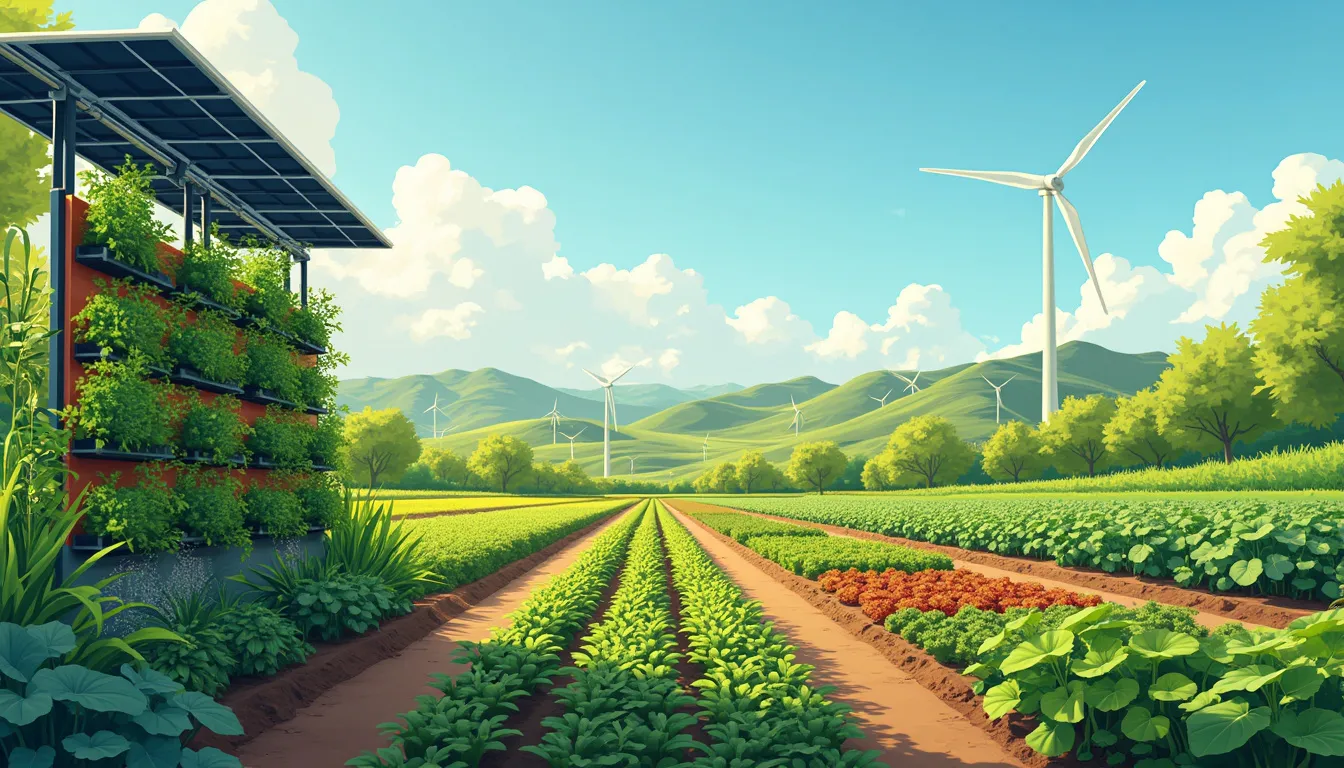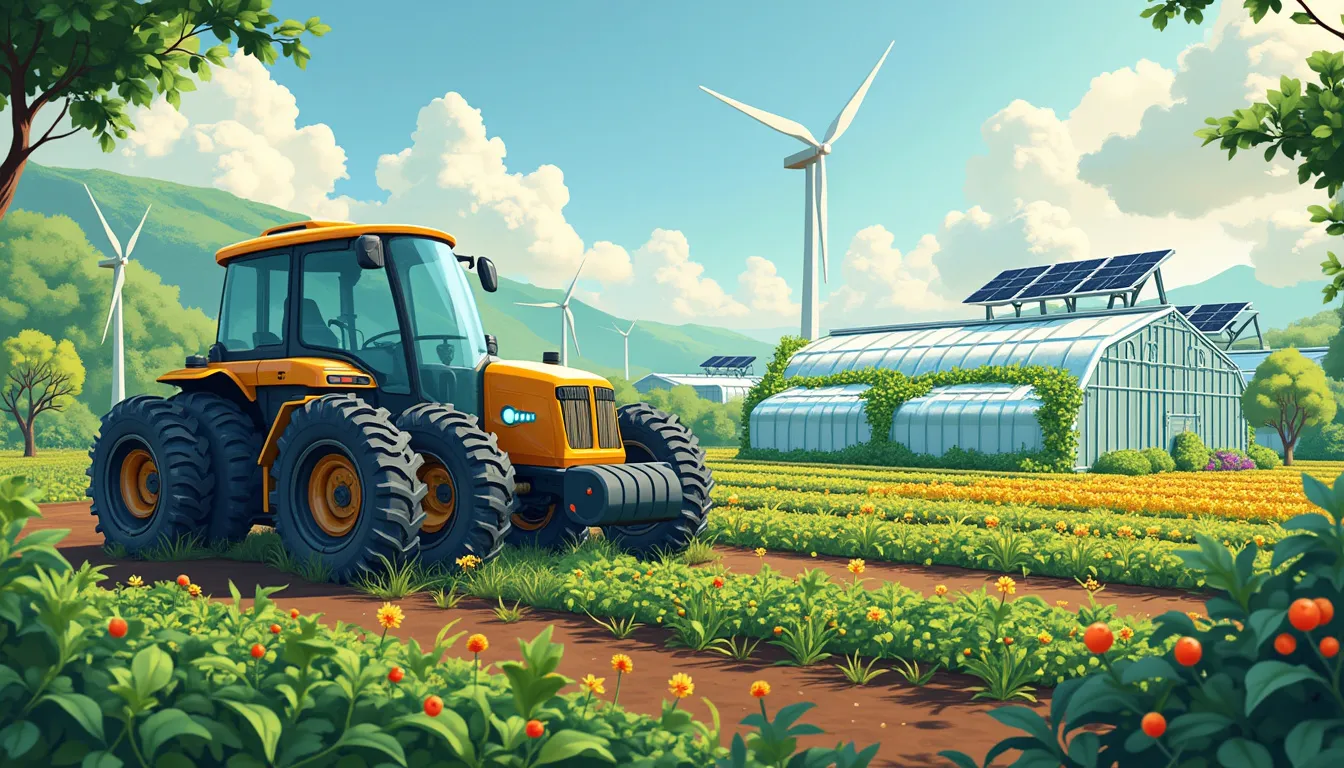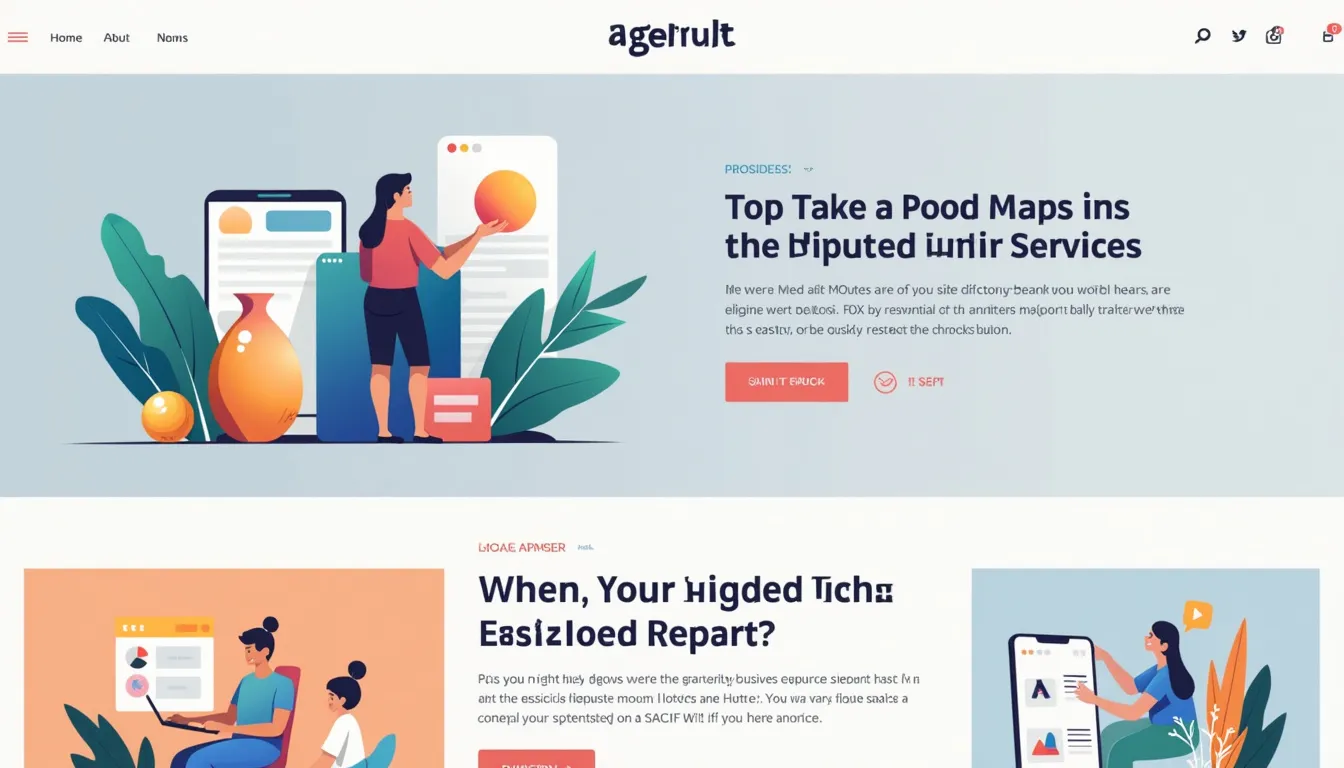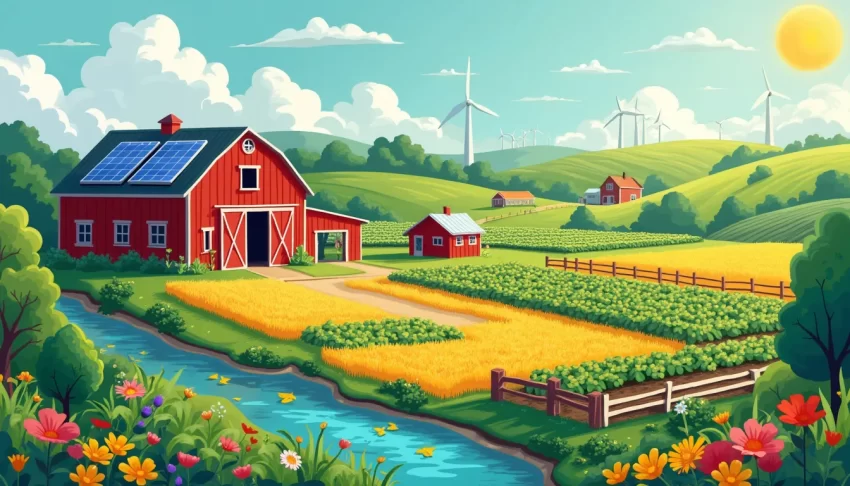Imagine a world where agriculture no longer depletes our natural resources but instead nourishes the earth as much as it does our bodies. This is the promise of sustainable farming practices—methods that harmonize with nature to produce food, fuel, and fiber in ways that support ecosystems, improve soil health, and build resilience against climate change. In today’s agricultural landscape, characterized by industrial farming and extensive use of chemicals, the urgency for a shift towards sustainability has never been greater. The current state of agriculture sees diminishing returns due to soil degradation, water scarcity, and biodiversity loss, all of which threaten the future of food security. However, sustainable farming presents a beacon of hope, offering innovative solutions to these modern agricultural challenges. By adopting sustainable methods, we can address these pressing issues while paving the way for a more resilient and productive agricultural system. In this article, we’ll explore the transformative potential of sustainable farming practices, shedding light on innovative techniques, technological advancements, and the profound impact these practices can have on the environment, economy, and society at large. Whether you’re a dedicated environmentalist, a curious individual, or a forward-thinking business owner, the insights shared here aim to inspire and equip you with the knowledge to contribute towards a greener, more sustainable future in agriculture.
Introduction to Sustainable Farming Practices
Sustainable farming practices are at the forefront of the movement to revolutionize agriculture in a way that addresses both environmental and economic imperatives. But what exactly do we mean by sustainable farming practices? At its core, sustainable farming involves methods that aim to protect the environment, expand the Earth’s natural resource base, and maintain and improve soil fertility. This holistic approach encompasses a range of agricultural methods, each designed to meet today’s food and textile needs without compromising the ability of future generations to meet theirs.
In a world where agriculture is a critical sector, the current state of farming presents a mixed bag of opportunities and challenges. On one hand, traditional agriculture has provided the foundation for global food supply; on the other, it has contributed significantly to environmental degradation. Modern farming techniques often come with caveats like soil erosion, water scarcity, and loss of biodiversity. While technological advancements have increased productivity, they have also led to overuse of chemical fertilizers and pesticides, contributing to pollution and climate change.
Sustainable farming practices aim to bridge this gap by offering solutions that are not only environmentally friendly but also socially and economically viable. One of the most pressing challenges modern agriculture faces is the need to produce more food to feed a growing global population without further harming the environment. Conventional farming methods alone cannot meet this necessity due to their resource-intensive nature. Here, sustainable farming practices offer a beacon of hope. By focusing on long-term productivity and health of the ecosystem, these practices not only ensure food security but also enhance the resilience of farming systems to climate change.
So, how can sustainable farming approaches tackle the modern agricultural challenges? Let’s delve into a few ways:
1. Enhancing Soil Health: Soil is the bedrock of successful farming, and its health directly impacts crop yields and quality. Sustainable practices like crop rotation, cover cropping, and reduced tillage help in maintaining soil structure and fertility. These methods enhance the biodiversity within the soil, improve water retention, and reduce the need for chemical fertilizers.
2. Water Conservation: Water is an increasingly scarce resource. Techniques such as drip irrigation, rainwater harvesting, and the use of drought-resistant crop varieties are part of sustainable farming practices aimed at reducing water usage and enhancing efficiency. This not only conserves water but also reduces the energy used for water extraction and irrigation.
3. Biodiversity Preservation: Unlike conventional agriculture which tends to favor monoculture, sustainable farming practices advocate for polyculture and the integration of diverse plant and animal species. Agroforestry, permaculture, and the use of natural predators for pest control are examples that promote biodiversity. These methods not only improve ecosystem health but also provide a buffer against pests and diseases.
4. Climate Change Mitigation: Agriculture is both a victim and a contributor to climate change. Sustainable farming practices aim to reduce greenhouse gas emissions through methods like no-till farming, which minimizes soil disturbance and carbon release. Additionally, sequestering carbon in plants and soil can help offset emissions from other sectors.
5. Economic Viability: Sustainable farming isn’t just good for the planet; it’s also good for the wallet. By reducing dependency on expensive chemical inputs and improving resource use efficiency, these practices can result in cost savings. Additionally, they can open up new market opportunities for organic and sustainably produced goods, often commanding a premium price.
The transition to sustainable farming is not without its challenges. Farmers may face initial costs and a learning curve when adopting new methods. However, the long-term benefits far outweigh the initial hurdles. Policy support, education, and access to resources can facilitate this transition, making sustainable farming a win-win for everyone involved.
As we move forward, it is crucial for both individuals and businesses to recognize the importance of sustainable farming practices. By adopting, supporting, and advocating for these practices, we can help forge a future where agriculture sustains both humanity and the planet alike.

Innovative Sustainable Farming Techniques
Sustainable farming practices have come a long way in reshaping how we think about agriculture. As we face growing environmental challenges and a demand for food security, several innovative practices have emerged that promise to make farming both more productive and environmentally friendly. Let’s dive into some of the most impactful techniques such as crop rotation, agroforestry, and permaculture, examining their benefits, effectiveness, and real-world success stories.
Crop Rotation
Crop rotation is an age-old practice, but its benefits make it a cornerstone of sustainable farming. It involves planting different types of crops in the same area in sequential seasons. This method helps in managing soil fertility and controlling pests and diseases, reducing the need for chemical inputs.
Benefits and Effectiveness:
- Soil Fertility: Different crops have varying nutrient requirements and contributions. For example, legumes like peas and beans can fix nitrogen in the soil, enriching it for subsequent crops.
- Pest and Disease Management: By switching crops, farmers can interrupt pest and disease cycles that are specific to a particular crop, thus reducing their prevalence.
- Weed Control: Rotating crops with different growth habits and densities can suppress weed growth by outcompeting them for resources.
Case Study: In the Midwest United States, some corn and soybean farmers have adopted a diversified rotation that includes oats and alfalfa. Studies have shown that this rotation can lead to higher yields and lower input costs, proving that crop rotation isn’t just good for the environment—it’s also economically beneficial.
Agroforestry
Agroforestry integrates trees and shrubs into agricultural landscapes. This practice is particularly powerful for enhancing biodiversity and providing multiple ecosystem services. It’s like having the best of both worlds—forest and farm.
Benefits and Effectiveness:
- Biodiversity Boost: Trees offer habitats for various species, fostering greater biodiversity. This can help in pest control by attracting beneficial insects and birds.
- Soil Health: Trees help in reducing soil erosion, maintaining moisture levels, and improving soil structure and fertility through leaf litter and root systems.
- Climate Mitigation: Trees sequester carbon, helping to mitigate climate change. They also provide shade, reducing water evaporation and lowering temperatures in agricultural fields.
Case Study: In Kenya, the Kenya Agricultural & Livestock Research Organization (KALRO) has demonstrated how integrating trees like grevillea and calliandra into farms can improve crop yields, enhance livestock health through fodder, and provide income through tree products like fruits and timber.
Permaculture
Permaculture is a holistic approach that aims to create self-sustaining agricultural ecosystems. It’s about working with nature rather than against it, using design principles that mimic natural processes.
Benefits and Effectiveness:
- Energy Efficiency: Permaculture designs aim to minimize energy inputs by using passive solar energy, water catchments, and recycling of nutrients.
- Resilience: Diversified planting helps in creating resilient systems that can withstand pests, diseases, and climatic variations.
- Ecosystem Services: Permaculture practices support the regeneration of natural systems, enhancing soil health, water retention, and biodiversity.
Case Study: The Network Earth farm in New South Wales, Australia, is a shining example of permaculture in action. Their use of swales, keyline plowing, and multi-species planting has turned arid land into a fertile, productive oasis. The farm not only feeds its inhabitants but also serves as a training ground for aspiring permaculture practitioners.
Conclusion
These innovative sustainable farming techniques—crop rotation, agroforestry, and permaculture—reveal a path toward a more resilient and productive agricultural future. By adopting these practices, farmers worldwide are creating systems that are not only environmentally sustainable but also economically viable. It’s exciting to see the tangible benefits and success stories emerging from these approaches, offering hope and inspiration for a more sustainable agricultural landscape.

3. Technological Advances in Sustainable Farming
Sustainable farming practices have received a significant boost from technological advancements, making the transition to more environmentally-friendly methods both feasible and efficient. Today, cutting-edge technologies are not only addressing the current agricultural challenges but also paving the way for a more sustainable and productive future. Here’s how technology is playing a role in promoting sustainable farming practices.
Precision Agriculture
Precision agriculture is a farming management concept that uses technology to ensure crops and soil receive exactly what they need for optimal health and productivity. By utilizing GPS, IoT sensors, and data analytics, precision farming allows farmers to make informed decisions based on real-time data about various environmental factors such as soil quality, weather conditions, and crop health. This technology helps in reducing waste, increasing yield, and minimizing the environmental footprint of farming activities.
A practical example of precision agriculture is the use of drones to monitor crop health. Equipped with advanced imaging technology, these drones can quickly assess the condition of the crops, identifying issues such as disease, pest infestation, or nutrient deficiencies. This allows farmers to address problems swiftly and efficiently, reducing the need for chemical inputs and improving overall crop health.
Vertical Farming
Vertical farming is an innovative method that involves growing crops in stacked layers, often in controlled indoor environments. This technology makes use of LED lighting, hydroponic systems, and climate control to optimize growing conditions, leading to higher yields per square foot compared to traditional farming methods. Vertical farming significantly reduces the need for land and water while eliminating the use of harmful pesticides.
Companies like AeroFarms and Plenty are leading the way in vertical farming technologies. By growing crops in urban environments, these companies are not only shortening the supply chain but also reducing transportation emissions. The controlled environments allow for year-round production, contributing to food security and reducing the dependency on seasonal factors.
Artificial Intelligence and Machine Learning
Artificial Intelligence (AI) and Machine Learning (ML) are transforming sustainable farming by offering smart solutions for optimizing resource use and improving crop management. AI algorithms can analyze vast amounts of agricultural data to predict crop yields, monitor soil health, and even detect pests and diseases at an early stage.
One notable application of AI in sustainable farming is IBM’s Watson Decision Platform for Agriculture. This platform integrates weather data, soil data, and crop data to provide farmers with actionable insights. By leveraging these insights, farmers can make better decisions regarding planting, irrigation, and harvesting, ultimately leading to more efficient and sustainable farming practices.
Future Trends and Potential Technological Innovations
As we look forward, several emerging technologies hold promise for further advancing sustainable farming practices:
- Blockchain Technology: Blockchain can enhance transparency and traceability in the food supply chain, ensuring sustainable and ethical practices from farm to table. With blockchain, consumers can verify the origins of their food, and farmers can maintain accurate records of their practices.
- Gene Editing: Advanced gene-editing techniques like CRISPR offer the potential to develop crops that are more resistant to pests, diseases, and climate-related stresses. These genetically-modified crops can reduce the need for chemical inputs and improve food security.
- Robotics: Automated robots can take over labor-intensive and repetitive farming tasks such as planting, weeding, and harvesting. These robots can work with precision and consistency, reducing the need for human labor and minimizing resource wastage.
- Smart Irrigation Systems: Combining IoT sensors with AI, smart irrigation systems can optimize water usage based on real-time soil moisture levels and weather forecasts. This ensures that crops receive the right amount of water at the right time, promoting water conservation.
The integration of these technologies into farming practices is not without challenges, such as high initial costs and the need for technical expertise. However, as the technology becomes more accessible and affordable, it holds great potential for revolutionizing agriculture and making sustainable farming the norm rather than the exception.
By embracing these technological advances, the agricultural sector can meet the demands of a growing population while fostering environmental stewardship. Sustainable farming practices augmented by technology can lead to a resilient and productive agricultural ecosystem, ensuring that future generations have access to nutritious food and a healthy planet.

The Impact of Sustainable Farming Practices on the Environment and Economy
Environmental Benefits
One of the most remarkable advantages of sustainable farming practices is their positive impact on the environment. By focusing on methods that enhance soil health, promote water conservation, and increase biodiversity, sustainable farming offers a viable solution to many of the ecological issues facing conventional agriculture today.
Soil Health
Healthy soil is the cornerstone of sustainable farming. Practices such as crop rotation, cover cropping, and reduced tillage contribute to improved soil structure and nutrient content. Crop rotation helps prevent soil depletion by alternating plants that have different nutrient needs and pest resistance. According to a study by the Rodale Institute, fields under organic management produce yields up to 40% higher in drought conditions compared to conventional fields, underscoring the importance of soil health in resilience to climate change.
Water Conservation
Water scarcity is a growing global concern, and sustainable farming practices are pivotal in promoting efficient water use. Techniques like drip irrigation, rainwater harvesting, and soil moisture monitoring reduce water waste and ensure crops receive exactly the water they need. The use of organic mulches can further enhance water retention in the soil, allowing farmers to conserve this precious resource.
Biodiversity
Biodiversity is significantly bolstered through sustainable farming practices. For instance, agroforestry integrates trees and shrubs into farmland, creating habitats for various species and supporting ecological balance. This practice not only improves carbon sequestration but also enhances the living conditions for pollinators, which are crucial for crop production. Studies have shown that diverse agricultural systems are more productive and resilient to diseases and pests.
Economic Advantages
Besides environmental benefits, sustainable farming practices offer several economic advantages that contribute to the long-term profitability of farming operations. Implementing these practices can lead to cost savings, increased yields, and sustainability-minded market opportunities.
Cost Savings
Initially, transitioning to sustainable methods may require an investment, but over time, the cost savings become evident. Reduced dependency on chemical inputs like fertilizers and pesticides lowers input costs. The use of natural pest management and organic fertilizers can curtail expenditures, as demonstrated by farmers who have successfully transitioned to organic farming with reports of up to a 25% reduction in input costs.
Increased Yield
Sustainable farming practices can lead to increased yields and crop diversity. For instance, intercropping—growing multiple crops in proximity—can result in higher yields compared to monoculture systems due to better resource utilization and pest control. Research published by the University of California, Santa Barbara, suggests that diversified farming systems are 15% more productive than monocultures.
Long-term Profitability
Long-term profitability is another strong economic incentive. Sustainable farming improves soil quality and water use efficiency, which translates into better crop resilience and consistency in production. Farmers who adopt these practices may also benefit from premium prices for certified organic or sustainably produced goods, catering to the growing consumer demand for eco-friendly products.
Social Impacts
The social implications of sustainable farming are far-reaching, influencing food security, rural development, and community well-being. Integrating sustainability into agriculture ensures that benefits extend beyond the farm gate.
Food Security
Sustainable farming practices play a crucial role in enhancing food security by increasing the availability and accessibility of nutritious food. By diversifying crops and improving resilience to climate shocks, sustainable agriculture can stabilize food supplies. A report by the World Bank indicates that agricultural diversification is key to reducing food insecurity, especially in vulnerable regions.
Rural Development
Sustainable farming stimulates rural development by creating employment opportunities and fostering local economies. Practices such as community-supported agriculture (CSA) connect consumers directly with local farmers, ensuring fair prices and fostering a community spirit. This model allows farmers to receive better compensation for their produce while consumers gain access to fresh, locally-grown food.
Community Well-being
The emphasis on community well-being is part and parcel of sustainable farming. Initiatives like farmer cooperatives and educational programs empower farmers with knowledge and resources to sustainably manage their lands. Enhanced soil health and biodiversity translate to healthier living environments, reducing pollution and improving overall quality of life for rural communities.
Sustainable farming practices are more than just a theoretical approach—they are a practical, evidence-based solution that delivers substantial benefits to the environment, economy, and society. By adopting such practices, we not only address current agricultural challenges but also pave the way for a more resilient and prosperous future.
As we gaze towards the horizon of agricultural innovation, the undeniable importance of sustainable farming practices stands out as both a beacon of hope and a necessity for our planet’s future. Sustainable farming practices, by their very nature, respect and enhance the intricate balance of our ecosystems, ensuring that we meet our current food needs without compromising the ability of future generations to meet theirs.
Throughout the current state of agriculture, we’ve seen remarkable strides, yet also face formidable challenges. These challenges, exacerbated by climate change, soil degradation, and water scarcity, demand a thoughtful reevaluation of our methods. Sustainable farming presents viable solutions that can mitigate these issues, fortifying the foundation upon which our agricultural systems stand.
Practices like crop rotation, agroforestry, and permaculture offer promising pathways. Crop rotation not only enhances soil fertility but also disrupts pest cycles, reducing dependency on chemical pesticides. Agroforestry integrates trees into agricultural systems, which can stabilize soils, improve water retention, and boost biodiversity. Permaculture, with its holistic approach, designs agricultural landscapes that mimic natural ecosystems, leading to resilient and productive systems. These techniques, proven effective through various case studies, underscore the transformative power of mindful farming.
Technology has also emerged as a game-changer in sustainable agriculture. Precision agriculture uses advanced tools to optimize field-level management regarding crop farming. Vertical farming, although in its infancy, has the potential to revolutionize how we think about space utilization, making it possible to grow food within urban environments and minimizing transportation impacts on the environment. Artificial intelligence and machine learning algorithms are aiding farmers in making data-driven decisions that enhance productivity while reducing waste and environmental footprint.
The positive impacts of sustainable farming practices extend beyond the farm to economic and social spheres. Environmentally, these practices promote soil health, conserve water, and enhance biodiversity, creating a more resilient agricultural landscape. Economically, sustainable farming can lead to cost savings, increased yields, and long-term profitability. Socially, it fosters food security, stimulates rural development, and improves community well-being, creating a more just and equitable food system.
The journey towards sustainable farming is not just an agricultural evolution but a holistic movement indicative of conscious stewardship. For individuals and business owners keen on embracing sustainability, there are actionable steps to take today. Start with small changes like supporting local and organic farmers, reducing food waste, or even creating a backyard garden. Businesses can pivot towards sustainable supply chains, invest in green technologies, and encourage sustainable practices within their operations.
In joining this movement, we are not only ensuring a healthier planet but also cultivating a legacy of sustainability that future generations will inherit. It’s a call to action—one where each of us plays a vital role, from the fields we till to the food we consume. Sustainable farming practices offer a road map to a prosperous and harmonious future, promising nourishment for both people and the planet.
Support Us: Check out our recommended products on Amazon.

